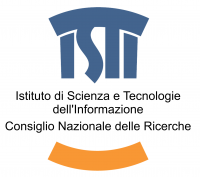According to legend, Siena was founded by the son of Remus, and the symbol of the wolf feeding the twins Romulus and Remus is as ubiquitous in Siena as in Rome. In reality the city was probably of Etruscan origin, although it wasn’t until the 1st century BC, when the Romans established a military colony there called Sena Julia, that it began to grow into a proper town.
In the 12th century, Siena’s wealth, size and power grew along with its involvement in commerce and trade. Its rivalry with neighbouring Florence also grew proportionately, leading to numerous wars during the first half of the 13th century between Guelph Florence and Ghibelline Siena. In 1230 Florence besieged Siena and catapulted dung and donkeys over its walls. Siena’s revenge came at the Battle of Montaperti in 1260 but victory was short-lived. Only 10 years later the Tuscan Ghibellines were defeated by Charles of Anjou and for almost a century Siena was allied to Florence, the chief town of the Tuscan Guelph League (supporters of the pope).
This was when Siena, ruled by the Council of Nine (a bourgeois group constantly bickering with the aristocracy), enjoyed its greatest prosperity. It was the Council that directed the construction of so many of the fine buildings in the Sienese-Gothic style that give the city its striking appearance, including lasting monuments such as the cathedral, the Palazzo Comunale and Il Campo itself.
The Sienese school of painting had its origins at this time with Guido da Siena and reached its peak in the early 14th century, when artists such as Duccio di Buoninsegna and Ambrogio Lorenzetti were at work.
A plague outbreak in 1348 killed two-thirds of the city’s 100,000 inhabitants and led to a period of decline.
At the end of the 14th century, Siena came under the control of Milan’s Visconti family, followed in the next century by the autocratic patrician Pandolfo Petrucci. Under Petrucci the city’s fortunes improved somewhat until the Holy Roman Emperor Charles V conquered it in 1555 after a two-year siege that left thousands of people dead. He handed the city over to Cosimo I de’Medici, who barred the inhabitants from operating banks and thus severely curtailed Siena’s power.
Siena was home to Santa Caterina, one of Italy’s most famous saints. But saints don’t make money. Today Siena relies on tourism for its prosperity and the success of its Monte dei Paschi di Siena bank, founded in 1472 and now one of the city’s largest employers.
In 1966 Siena was the first European city to banish motor traffic from its heart. To stroll its arteries, unclogged by carbon monoxide and unthreatened by speeding vehicles, scooters notwithstanding, is not the least of the town’s pleasures.


